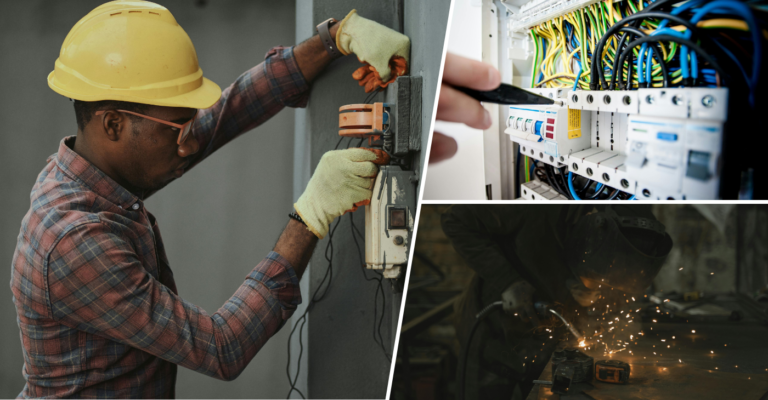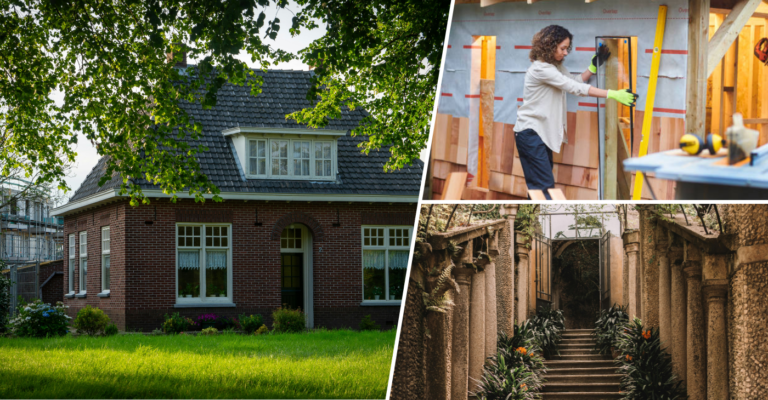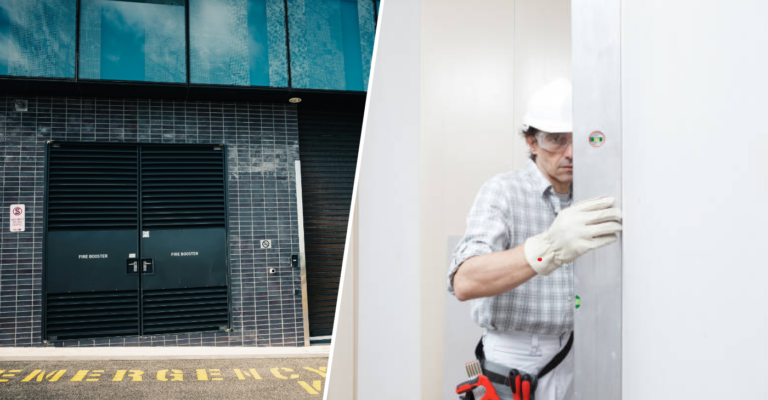5D building information modeling – A detailed guide
5D building information modeling (BIM) is a revolutionary approach that enhances traditional 3D modeling by time (4D) and cost (5D) dimensions. Construction industry personnel may more efficiently manage project finances and timelines thanks to this connection. It results in increased efficiency and precision. Stakeholders can lower risks and guarantee timely and economical project delivery by making educated decisions based on real-time visualization of the project’s expenses and progress.
This essay aims to examine the core components and advantages of 5D BIM, showcasing its revolutionary influence on the building sector. The construction process is streamlined and there is improved communication between architects, engineers, contractors, and clients thanks to the precision and efficiency provided by 5D BIM. Precise planning, resource distribution, and risk management are made possible by this approach, which eventually raises the standard and profitability of building projects.
The core components of 5D BIM
5D building information modeling (BIM) integrates two additional dimension-time (4D) and cost (5D)-into the traditional 3D modeling framework. These extra dimensions are crucial for enhancing the accuracy and efficiency of construction projects. Here are the core components that make up 5D BIM:
-
3D model
The 3D model serves as the foundation of 5D BIM by visually representing the project’s physical and functional qualities. This model contains precise information about the geometry, spatial relationships, geographic location, and attributes of building components. The 3D model serves as a foundation for including time and cost dimensions. It is becoming a key component of the 5D BIM process.
-
Time dimension (4D)
The 4D aspect of building information modeling BIM is the integration of project schedule data into the 3D model. Project managers can use this dimension to link tasks and timeframes to specific model components. The 4D model allows for dynamic display of the building process across time, assisting teams in identifying potential scheduling conflicts, optimizing workflows, and tracking project progress more efficiently.
-
Cost dimension (5D)
The 5D component incorporates cost estimation data into the BIM model. By linking financial information to the 3D and 4D elements, 5D BIM provides a comprehensive view of the project’s budget throughout its lifecycle. This dimension allows for accurate cost forecasting, budget tracking, and financial planning, ensuring that all expenditures are accounted for and managed efficiently.
-
Data integration and management
Effective data integration and management are critical for the success of 5D BIM. This involves consolidating various data sources, including design documents, schedules, and cost databases, into a single, cohesive model. Advanced software tools facilitate this integration, ensuring that all stakeholders have access to up-to-date and accurate information, which is essential for informed decision-making.
-
Collaboration and communication tools
5D BIM leverages collaborative platforms that enable seamless communication among project stakeholders. These tools ensure that architects, engineers, contractors, and clients are all on the same page, with real-time access to the model and its associated data. Enhanced collaboration reduces misunderstandings, promotes transparency, and ensures that all parties are aligned with the project goals.
-
Visualization and simulation
One of the significant advantages of 5D BIM is its ability to visualize and simulate various aspects of the construction project. This includes not only the physical appearance of the building but also the construction process, cost impacts, and potential risks. Visualization and simulation tools help in identifying and mitigating issues before they arise, ensuring a smoother construction process.

Best practices for implementing 5D BIM
Implementing 5D BIM effectively requires adherence to best practices that ensure its benefits are fully realized. Here are some key strategies for successful 5D BIM implementation:
-
Comprehensive training
Training is crucial for all team members who will be using 5D BIM tools. This includes not only software training but also understanding the principles of BIM and how to integrate time and cost data into the model. Comprehensive training ensures that everyone is proficient and can utilize the technology to its full potential.
-
Early integration
Integrating 5D BIM from the early stages of the project is essential. Starting with a detailed 3D model and progressively adding time and cost dimensions ensures that the project plan is robust from the outset. Early integration helps in identifying potential issues early and allows for more accurate planning and forecasting.
-
Standardization of processes
Standardizing BIM processes and protocols across the project team promotes consistency and efficiency. Establishing clear guidelines for data input, model updates, and collaboration ensures that everyone follows the same procedures, reducing errors and enhancing coordination.
-
Collaborative environment
Creating a collaborative environment is vital for the success of 5D BIM. Using shared platforms where all stakeholders can access and update the model in real-time fosters better communication and collaboration. Regular meetings and updates help in aligning everyone with the project’s objectives and progress.
-
Quality control and validation
Implementing strict quality control measures ensures the accuracy and reliability of the BIM model. Regular validation checks should be conducted to verify that the data is correct and up-to-date. This includes reviewing the model for any discrepancies or errors and making necessary adjustments promptly.
-
Effective data management
Efficient data management is critical for maintaining the integrity of the 5D BIM model. This involves organizing and storing data systematically, ensuring that all information is easily accessible and secure. Using cloud-based storage solutions can facilitate better data management and sharing.
-
Continuous improvement
Adopting a culture of continuous improvement ensures that the implementation of 5D BIM evolves and improves over time. Collecting feedback from team members, conducting regular reviews, and staying updated with the latest BIM advancements help in refining the processes and maximizing the benefits of 5D BIM.
5D BIM – Cost analysis
5D BIM significantly enhances cost analysis in construction projects by integrating detailed cost data with the 3D model, providing a comprehensive view of financial aspects throughout the project lifecycle. Here’s how 5D BIM contributes to accurate and efficient cost analysis:
1. Detailed Cost estimation
5D BIM allows for precise cost estimation by linking detailed cost data to every component of the 3D model. This integration ensures that all materials, labor, and equipment costs are accurately calculated from the outset. The ability to visualize costs in real-time helps in maintaining an accurate budget forecast, reducing the likelihood of cost overruns.
2. Comprehensive budget tracking
Throughout the project lifecycle, 5D BIM enables continuous budget tracking and control. Real-time updates to the model reflect any changes in costs, allowing project managers to monitor expenditures closely. This transparency helps in identifying and addressing budget deviations promptly, ensuring that the project remains within financial constraints.
3. Efficient resource allocation
By integrating cost data with project schedules, 5D BIM facilitates the efficient allocation of resources. Project managers can plan and schedule resources more effectively, minimizing waste and optimizing the use of labor, materials, and equipment. This leads to significant cost savings and improved productivity.
4. Scenario analysis for cost management
5D BIM’s simulation capabilities allow project teams to run various scenarios to assess the financial impact of different design and construction decisions. By analyzing these scenarios, teams can identify the most cost-effective approaches and strategies, further enhancing budget control and financial planning.
5. Real-time cost adjustments
With real-time data integration, any changes in the project scope, design modifications, or unexpected challenges can be immediately reflected in the cost analysis. This capability allows for swift adjustments to the budget and resource allocation, ensuring that the project remains financially viable and aligned with its financial goals.
6. Enhanced decision-making
The comprehensive cost analysis provided by 5D BIM supports informed decision-making. Stakeholders can evaluate the financial implications of their choices with greater accuracy, leading to more strategic and financially sound decisions throughout the construction process.

7. Challenges and solutions
High initial cost
Implementing 5D BIM can be expensive due to the cost of software and training.
Solution: Phased implementation can help spread these costs over time, making it more manageable for organizations to adopt the new system.
Resistance to change
Transitioning from traditional methods to 5D BIM can face resistance from team members accustomed to older practices.
Solution: Investing in comprehensive training programs ensures all team members are proficient and comfortable using BIM tools, easing the transition.
Complexity of data integration
Integrating various data sources into a cohesive 5D BIM model can be challenging.
Solution: Employing robust data management practices ensures accurate and accessible project information, enhancing collaboration and decision-making.
Future trends in 5D BIM
Integration of AI and machine learning
Artificial intelligence (AI) and machine learning (ML) are set to revolutionize 5D BIM by enhancing predictive analytics and automating routine tasks. AI can analyze vast amounts of data to identify patterns and optimize project schedules and costs, leading to smarter decision-making and increased efficiency.
Advanced visualization technologies
Virtual reality (VR) and augmented reality (AR) are becoming integral to 5D BIM, offering immersive project visualizations. These technologies enable stakeholders to experience a project in a virtual environment, facilitating better understanding and communication of design concepts and potential issues.
Cloud-based collaboration
Cloud technology is transforming how project data is stored, accessed, and shared. Cloud-based 5D BIM platforms allow real-time collaboration among geographically dispersed teams, ensuring that all stakeholders have access to the latest project information, which enhances coordination and reduces errors.
Sustainability and green building
5D BIM is increasingly focusing on sustainability, integrating environmental data to evaluate the ecological impact of construction projects. This trend supports the design and implementation of green building practices, ensuring that projects meet regulatory requirements and sustainability goals.
Enhanced interoperability
As the construction industry adopts more digital tools, the need for seamless interoperability between different software platforms becomes crucial. Future developments in 5D BIM will likely focus on creating more robust integration capabilities, ensuring that data can flow effortlessly between various systems, improving overall project efficiency.
Improved risk management
Advanced risk management tools within 5D BIM will enable better identification and mitigation of potential project risks. By incorporating historical data and predictive analytics, these tools can forecast potential issues and suggest proactive measures, reducing the likelihood of delays and cost overruns.
IoT and real-time data integration
The internet of things (IoT) will play a significant role in future 5D BIM applications. Real-time data from sensors and smart devices on construction sites can be integrated into the BIM model, providing up-to-date information on site conditions, equipment usage, and progress, leading to more informed decision-making.
Modular and prefabrication techniques
5D BIM will increasingly support modular construction and prefabrication methods. By integrating detailed manufacturing data into the BIM model, construction teams can plan and execute modular builds more efficiently, reducing waste and speeding up project timelines.
Conclusion: Enhancing accuracy and efficiency with 5D BIM
5D Building Information Modeling (BIM) enhances construction accuracy and efficiency by integrating time and cost dimensions into 3D models. This approach enables real-time visualization of project progress and costs, improving decision-making, reducing risks, and ensuring timely, cost-effective delivery. Implementing best practices and overcoming challenges such as high initial costs and data integration complexities can maximize the benefits of 5D BIM. Future trends like AI, cloud collaboration, and IoT integration promise further advancements, driving innovation and sustainability in construction projects.







